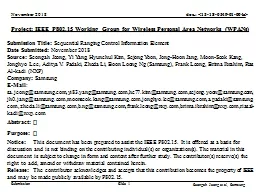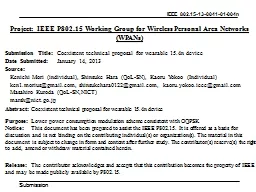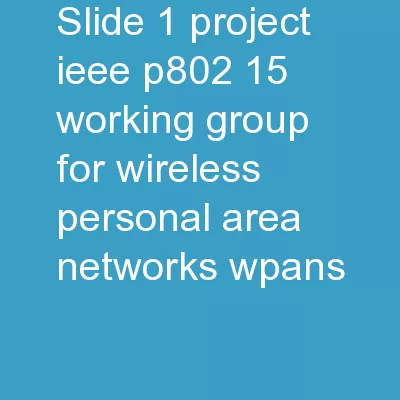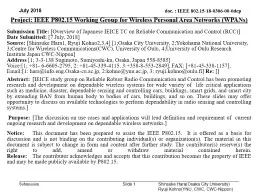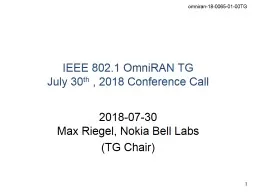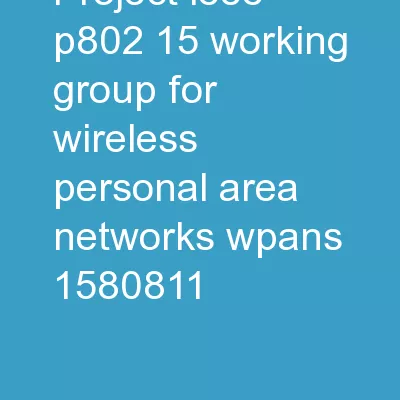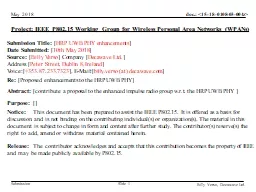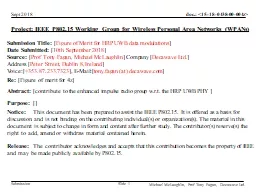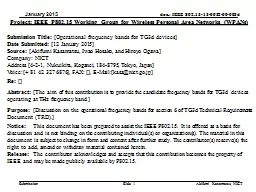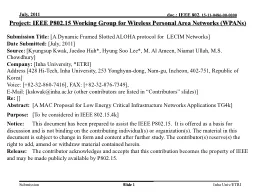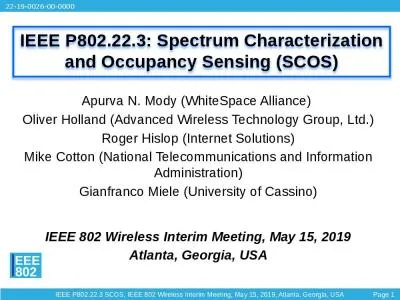PPT-Project: IEEE P802.15 Working Group for Wireless Personal Area Networks (WPANs)
Author : grewhypo | Published Date : 2020-08-28
Submission Title Sequential Ranging Control Information Element Date Submitted November 2018 Source Seongah Jeong Yi Yang Hyunchul Kim Sejong Yoon Jong
Presentation Embed Code
Download Presentation
Download Presentation The PPT/PDF document "Project: IEEE P802.15 Working Group for ..." is the property of its rightful owner. Permission is granted to download and print the materials on this website for personal, non-commercial use only, and to display it on your personal computer provided you do not modify the materials and that you retain all copyright notices contained in the materials. By downloading content from our website, you accept the terms of this agreement.
Project: IEEE P802.15 Working Group for Wireless Personal Area Networks (WPANs): Transcript
Download Rules Of Document
"Project: IEEE P802.15 Working Group for Wireless Personal Area Networks (WPANs)"The content belongs to its owner. You may download and print it for personal use, without modification, and keep all copyright notices. By downloading, you agree to these terms.
Related Documents

